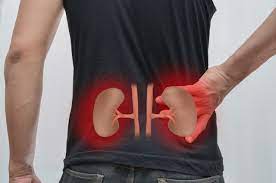Glomerulonephritis is inflammatory a disease that affects the kidneys, in particular the glomeruli, disrupting their filtering capacity. As a result of the inflammatory process, the cells of the kidney sieves expand, and the glomeruli secrete blood components that are kept within the norm: proteins and erythrocytes. They and are found in the urine in excessive amounts with glomerulonephritis. This loss depletes the blood of components important for fluid balance, which threatens the appearance of edema, anemia, and hypertension.
How does filtering work?
Let's recall the anatomy to better understand the mechanisms of the condition. The renal corpuscle is formed by the vascular part consisting of a bundle of arteries capillaries , which is called renal glomerulus surrounded by an epithelial capsule. This capsule consists of two leaves : parietal and visceral ; last constitute special _ cells - podocytes . Between two layers of the epithelium, a chamber called the glomerulus is formed , into which the renal filtrate flows. Podocytes secured processes ( legs ) that reach the capillary epithelium. These cells are negatively charged and have small gaps that prevent the passage of large molecules into the blood.
In case of inflammation podocytes increase their permeability , allowing even large molecules like proteins to pass through. Inflammatory process , connected from glomerulonephritis , is usually symmetric and bilateral with involvement of the glomeruli of both kidneys.
As it appears glomerulonephritis?
The main ones clinical manifestations glomerulonephritis is hematuria ; proteinuria ; impaired kidney function; arterial hypertension; swelling
Exist many forms of glomerulonephritis with different pathogenesis, course and prognosis, from asymptomatic to lethal forms, which proceed acutely or chronically towards renal failure. The common element between the various forms is the presence of an inflammatory lesion of the renal glomeruli, otherwise there is wide variability both in the causes of occurrence and in the most appropriate treatment. First of all, acute and chronic forms are distinguished.
Acute glomerulonephritis : sudden onset of hematuria and proteinuria, accompanied by rapidly progressing renal failure, edema , arterial hypertension and n increase equal creatinine and urea in blood serum.
Chronic glomerulonephritis : a slow and progressive decrease in kidney function with hematuria and proteinuria in the urine, which slowly leads to the uremic syndrome.
The onset renal deficiencies occupies days or years and is as a result wear nephrons survivors because of compensatory _ functionally _ load _ Proteinuria, as a rule, does not exceed 3 g in 24 hours.
How to treat? Specialists MC " Bogolyuby " they emphasize that _ The choice of therapy depends from pathology , as a result which is glomerulonephritis . For example , poststreptococcal glomerulonephritis are treated antibiotics such as penicillin , amoxicillin and erythromycin ; _ with on the other hand, in case associated glomerulonephritis _ with nephrotic syndrome, corticosteroids and immunosuppressants provide moderate therapeutic success. Unfortunately, in some cases, the root causes of the renal inflammatory process are not known, therefore, in the absence of established etiological therapy, general rules are adopted.
Acute glomerulonephritis requires compliance low-sodium and low- protein diets are possible using antihypertensives drugs _ Chronic glomerulonephritis provides compliance low protein antihypertensive diet _ therapy ; application vitamin D, statins , moderate physical activity _
















